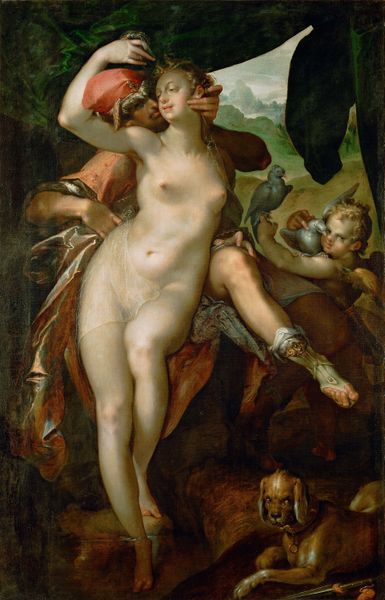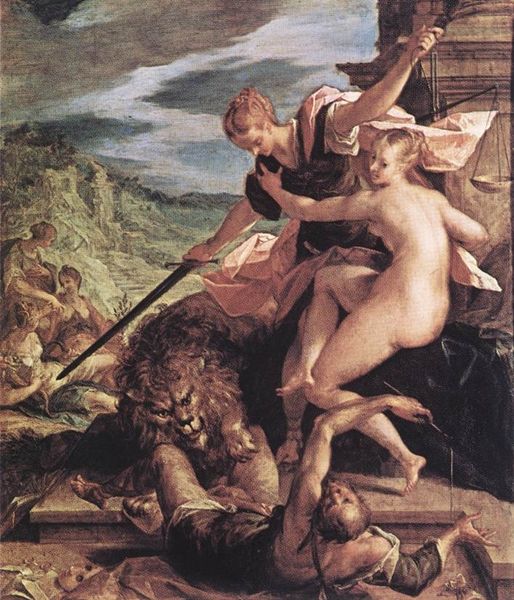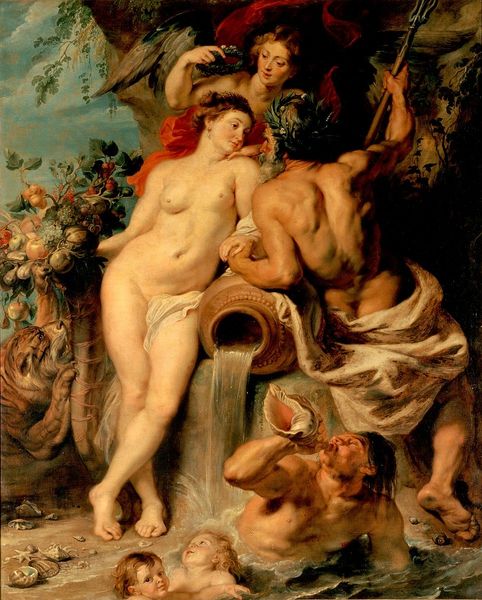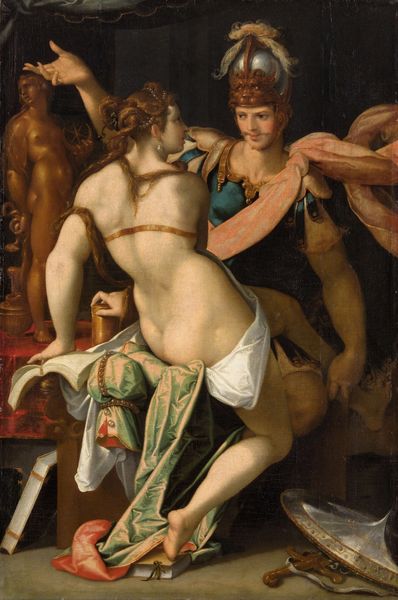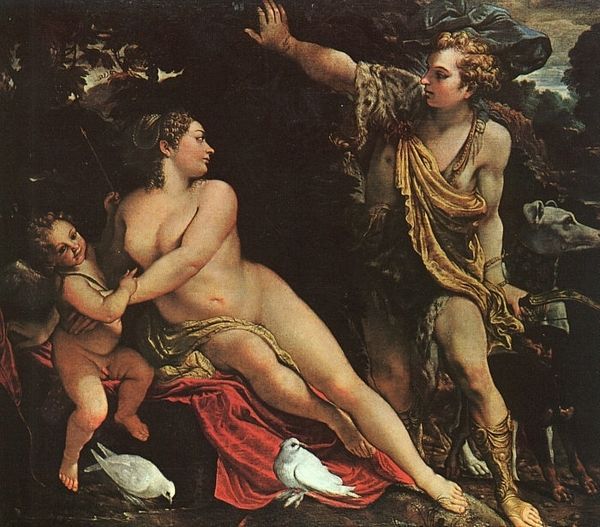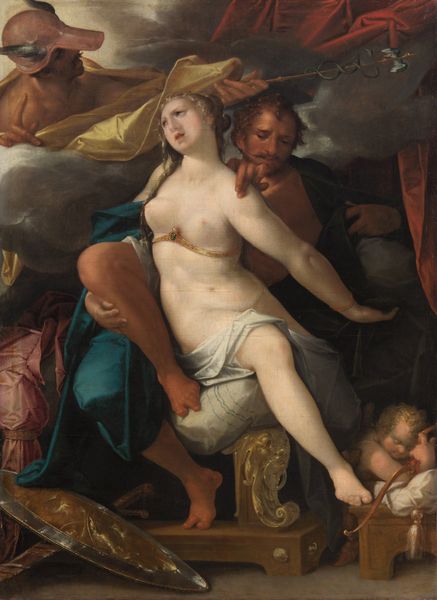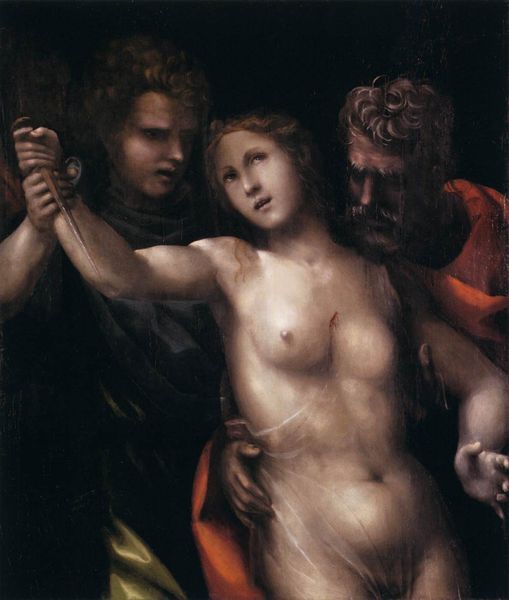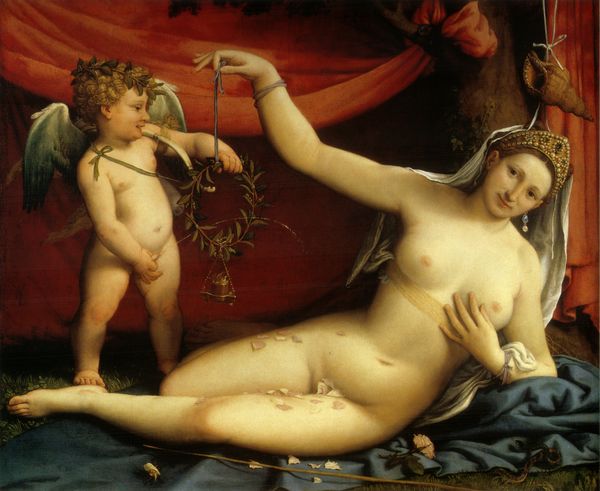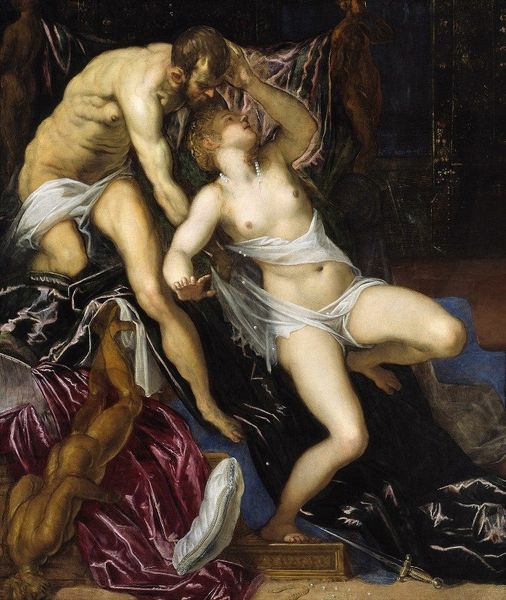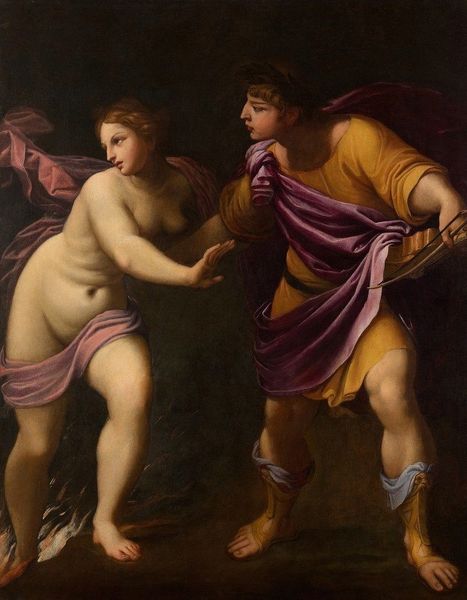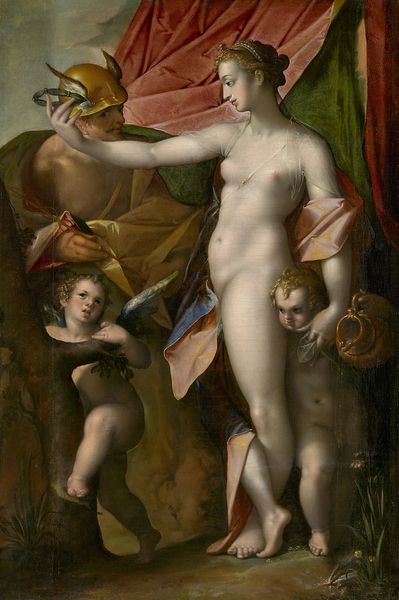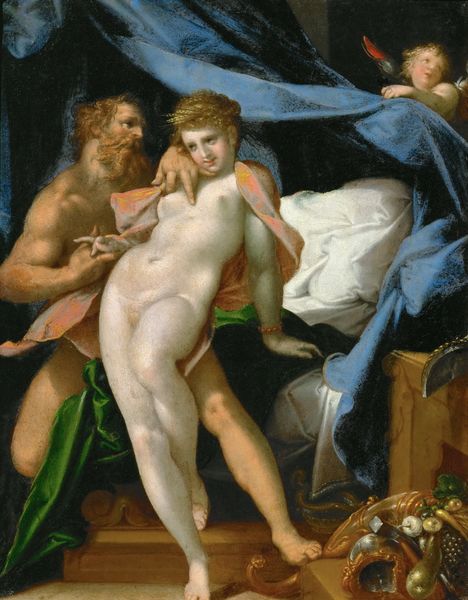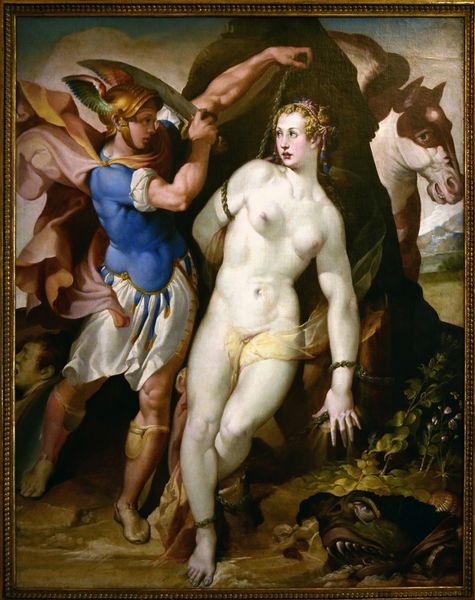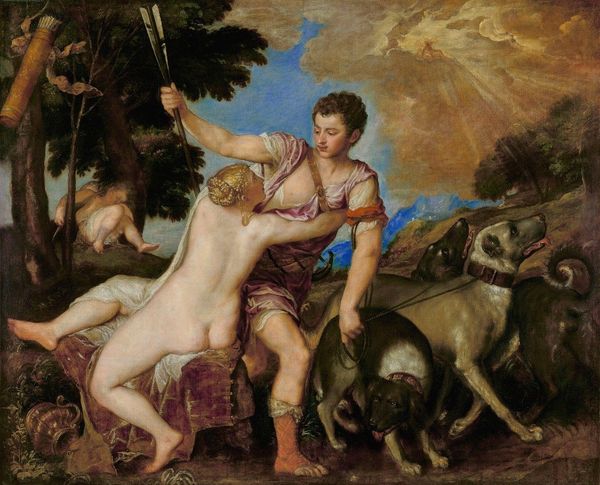
oil-paint
#
allegory
#
oil-paint
#
mannerism
#
painted
#
figuration
#
oil painting
#
underpainting
#
facial painting
#
history-painting
#
nude
Dimensions: 24 x 19 cm
Copyright: Public domain
Curator: Bartholomeus Spranger's "Herakles and Omphale," painted around 1585, currently resides in the Kunsthistorisches Museum in Vienna. What is your initial impression of this piece? Editor: There’s something deeply unsettling about this portrayal of Herakles; stripped of his power, he seems almost… diminished. It really sparks my interest about what Spranger tries to communicate in this painting about traditional heroic depictions. Curator: I see it more as a formal exercise in Mannerist style. Notice the elongated figures, the dynamic poses, the theatrical composition—it’s all about visual artifice and showcasing technical skill. Observe the intricate rendering of drapery, the carefully constructed color palette. Editor: But consider the narrative! We see Herakles, a symbol of masculine strength, reduced to spinning wool, while Omphale, bedecked with his lion skin and club, embodies power. Doesn’t that disrupt conventional gender roles and question established hierarchies? This canvas dares us to consider the instability of power. Curator: The narrative is a vehicle. What truly stands out is the artist's masterful handling of light and shadow, creating a sense of drama and depth. This contrasts significantly with the later tenebrism found in Caravaggio's oeuvre. Focus instead on the serpentine lines, and how the painting pushes against naturalism. Editor: But doesn't pushing against naturalism become a statement in itself, a choice about what kind of reality—or fantasy—the artist wants to create? Consider that Spranger created this painting during a tumultuous period, filled with wars of religion. By upending the traditional heroic narrative, might he be commenting on the instability of leadership and the potential for role reversals in his own society? Curator: The composition undeniably holds great significance. The interplay between foreground and background is palpable; indeed, Spranger guides the eye through subtle placements that make this tableau more than just representation. Editor: Precisely! That interplay allows us to reconsider archetypes. I come away with a sense that it's less an idealization and more a challenge to social and political norms. Curator: Ultimately, "Herakles and Omphale" embodies a fusion of virtuosity and calculated aestheticism, a true spectacle of line, color, and form. Editor: For me, it's an enduring and very clever challenge to entrenched beliefs regarding power, gender, and identity that feels very relevant even today.
Comments
No comments
Be the first to comment and join the conversation on the ultimate creative platform.
